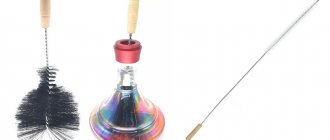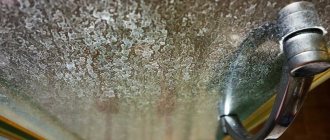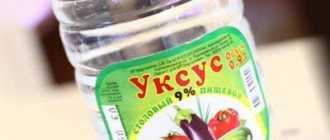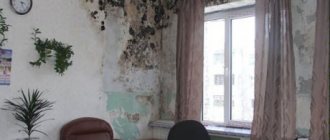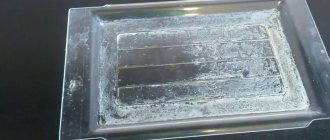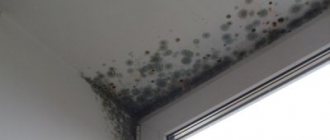A shower stall can be cleaned in a large number of ways, but in order not to spoil its coating, it is necessary to determine what the structure of the cabin is made of. Different materials require different approaches. And what is good for glass can be fatal for plastic.
Vinegar and baking soda, when used correctly, do an excellent job of removing limescale, mold and rust. But professional teams do it no worse. How to treat a shower stall so that its surface sparkles, as if it had just come from the store? We will try to consider this dilemma from all sides.
Shower cabin. Prevention
Where does this nasty deposit on the glass and shower tray come from? It's all water's fault. Plaque is calcium and iron salts that remain after the drops have completely dried. Not rinsed off detergents also contribute to the formation of a cloudy coating on all protruding parts. And if this plaque is not removed from surfaces for a long time, then it eats into the enamel and becomes much more difficult to clean.
The easiest way to prevent plaque from appearing is to scrub it off for many hours in a row. For prevention, you can use the method of thorough rinsing. After a shower, you should rinse the entire cabin from the inside with a stream of water. The surface should be dried with the doors open. An important condition for the absence of mold in the bathroom is working ventilation.
Air circulation in the cabin is a good prevention of not only plaque, but also mold. As you know, mold spores do not reproduce on a dry, ventilated surface. They need dark and damp places to live.
Causes of fungus
Fungus can appear in booths for the following reasons:
- Condensate. Due to the difference in temperature inside the cabin and outside, condensation forms on the glass walls, which flows down to the sealing rubber bands. The moisture does not have time to dry completely, which is what causes mold to appear. This problem is especially acute for showers with a built-in sauna . The difference in temperature inside and outside such a cabin can reach 40 degrees.
- Poor ventilation . If there is no air circulation in the bathroom, water will not have time to evaporate from surfaces, which will lead to stagnation. That's all the fungus needs!
- Congestion zones. If the slope when installing the cabin is not maintained, water will accumulate on one side. If you don’t keep an eye on this, mold will definitely “take advantage” of the opportunity provided.
Cleaning shower cabins. We follow the rules
A shower cabin instead of a bathtub is installed both in small apartments and where it simply seems most convenient. Let's say right away that it is easier to care for a standard bathroom than a cabin, which is made of a variety of materials.
The cabin structure is made of aluminum or chrome-plated steel. This part is usually rubbed until shiny. Next, clean the glass parts with a tray, which can be a ceramic or enamel base. There are also plastic elements of the cabin, and they require special careful care. In addition, if the base is made of acrylic, then it is simply impossible to use aggressive detergents.
A set of equipment for cleaning a shower cabin may include the following items:
- Sponges.
- Microfiber cloths.
- Silicone scrapers.
- Cleanser.
The last item on the list requires careful analysis. After all, the wrong product can forever ruin the presentable appearance of the shower stall. A well-chosen composition will make the work of cleaning the shower two to three times easier.
Professional products
Construction and hardware stores have a wide range of products to suit every taste and budget.
I don’t see the point in writing specific names, since there may be completely different means in your region. I’ll give an example of those that I would get from Leroy Merlin (or any other construction store):
- Prosept mold remover 0.5 l - cheap and cheerful, reviews are contradictory.
- Neomid ready-made mold remover 0.5 l is a professional product.
- Found Safescreen 0.75 l - perhaps an overpayment for the brand, but the reviews are good.
In any case, I recommend looking at reviews of a specific product on your phone in the store, or asking the consultants.
In a hardware store, I would just take Whiteness, use it several times, I’m happy with the result. You can look at branded products, for example, Silit Beng or Anti-mold.
Read the instructions! Let's say that some products need to be washed off after 20-30 minutes, while others need to be left until completely dry.
Cleaning the shower tray
To choose the right product that is guaranteed to clean the pan, you need to decide on its type. Based on this, work will be carried out to clean and wash the lower part of the cabin. Let's look at the main options for pallets and working with them:
- Acrylic enamel. Beautiful, widespread and very capricious material. Hard powders, iron sponges and alkaline compounds are “taboo” for acrylic. Acetone and alcohol, both as part of products and separately, are also prohibited. For cleaning, mild detergents are used, as well as professional compounds such as Sarma, Amway, Akrilan, Sif and others. Among the “folk remedies”, toothpaste is suitable for cleaning the tray. And special solutions clean acrylic enamel in 10 - 15 minutes.
- Enameled surface. This enamel is applied to cast iron or steel. To successfully clean it, you need to choose a product without acids, alkalis and formaldehyde in the composition. The ideal solution is “Komet” and “Pemolux”. Baking soda and lemon juice also work well to remove stains on this enamel. All products are applied to the surface in a thick layer and then washed off after 10 minutes.
- Earthenware and tile bases. “Santi”, “Domestos”, “Shining Tile” and many other sanitary ware compounds easily and quickly wash tiles and earthenware. It's a little more difficult to clean the putty between the pallet plates. But you can use this recipe: stir ammonia, lemon juice and a quarter glass of vinegar in warm water (1.5 liters). Then rub the product into the seams with a toothbrush. And after 15 minutes it is washed off. This recipe is also good for fighting mold.
After carefully washing the tray, it’s time for the shower doors. How to wash sliding doors competently and effectively?
Removing mold without dismantling the cabin
How to remove fungus without disassembling the shower box? Of course, this method is not as effective as the previous one, but it is much simpler and cheaper, and it can even be performed for preventive purposes:
- Mix the special solution:
| Ingredient | Quantity |
| Vinegar | 1 tablespoon |
| Ammonia | 1 tablespoon |
| Water | ¾ cup |
- We carefully treat the doors, walls, pallets and especially joints containing silicone sealant with the resulting mixture, which, as we have found out, is the most favorable environment for the spread of fungus.
Treating cabin glass with a homemade solution
We clean glass and plastic doors
Shower doors are made of “reinforced” glass or triplex. There are also options made from special plastic.
To clean plastic and triplex, you will need a rubber scraper. A specialized foam or aerosol substance is applied to the doors and then removed from them with quick movements. Plastic cabin doors cannot be cleaned with abrasive or alkaline compounds. Powders cannot be used for them, as the surface will easily rub off and scratches will remain.
Glass material is not as capricious as triplex. Glass doors can be cleaned with any products from the supermarket. In addition, vinegar and lemon will perfectly remove all stains and stains on the shower doors. And they can handle it even better than professional cleaners.
Cleaning glass doors
Caring for a glass shower cabin is quite simple. You can use any glass and mirror cleaning products. The algorithm is simple: spray, rinse and wipe dry.
Advice! To clean glass doors, it is convenient to use a window scraper. On one side, such a brush is equipped with a sponge, and on the other, rubber, so as not to leave streaks.
You can also prepare cleaning compositions yourself.
Ammonia + water
To clean glass shower doors from plaque and dirt, it is recommended to use ammonia, 5 drops of which must be combined with 1 glass of water. To make the cleaning effect last longer, you can add 100 ml of glycerin to the solution, due to which a protective film is formed on the surface of the glass.
Vodka+water
Another way to clean shower glass until shiny is to use vodka and water. You need to take 2 tbsp. l. alcohol per 2 tbsp. l. water, and treat the door with the resulting solution.
Citric acid or vinegar
A solution of citric acid or vinegar will help fight limescale on glass. The method for preparing the solution is described above.
How to care for the plumbing in the shower?
Chrome steel is used to create plumbing fixtures. This material is quite resistant to humidity and high temperatures. But over time, salt deposits and rust still form on it.
Have you found such deposits on your tap? There is no need to judge him and throw him in the trash. There are many ways to scrub and dissolve even the most severe and complex stains.
For prevention, you can wipe the plumbing in the shower stall with a dry cloth every time after taking a shower. Heavily soiled plumbing fixtures can be cleaned with vinegar. It is enough to pour it into a double bag, put it on the tap, and leave for 2 - 3 hours. After this, all plaque can be easily washed off with a regular sponge.
CityBang cleans shower nozzles and holes in the shower head well. Although vinegar copes with these same tasks in exactly the same way. For more effective cleaning, you can use matches for those places where the openings of the devices are small.
You can use an old toothbrush to clean threads and hard-to-reach corners of faucets and showers. Apply the usual household chemicals to it and rub those areas where the sponge simply cannot fit.
It is better to use a brush with the stiffest bristles. But if there is only a soft option in the house, you can trim the length of the hairs a little with scissors. This will make cleaning and polishing your plumbing fixtures even more effective.
Cleaning chrome metal surfaces
Limescale deposits are especially noticeable on metal surfaces: taps, mixers, hoses, frames. Removing it is quite simple: use popular household chemicals: Cif, Cilit Bang, Sarma Sanita, Sanox. Apply the detergent to the surface and wait the time indicated in the instructions. This way you can effectively clean the cabin of plaque. You can also use a solution of vinegar or citric acid, as described above. Read about how to clean a toilet from limescale here.
- If a tap or steel hose is heavily coated with scale, a cloth soaked in vinegar and wrapped around it will come to the rescue.
- If the holes in your shower head are clogged, you can use an effective solution called “CilitBang” or vinegar. In particularly difficult cases, you can clean the sprayer by immersing it in a bag of vinegar and leaving it overnight. During this time, the plaque will soften and come off easily.
Difficult fight against mold
In those days when such quantities of household chemicals did not exist, mold was considered a death sentence for a room. Today it is quite possible to remove it with different compositions.
Industrial fungicides are freely available. Just read the instructions carefully and apply the substance to the mold. And then rinse with water and dry. And there will be no trace of the pest on the walls of the shower stall.
To prevent mold, you can use vinegar and baking soda. A solution of laundry soap is also well suited for these purposes. Some people believe that mold can be removed using the same methods. Perhaps this is so, because folk remedies in the fight against mold have been used for a long time. And industrial analogues remove its spores quite quickly and rid the surface of it in one or two applications.
How to get rid of mold on shower caulk
Let's move on to specific examples. To remove mold from shower caulk yourself, you will need to be patient:
- If possible, spill the sealant of the shower cabin with any chosen product.
- If necessary, scrub the silicone with a soft brush.
- Leave for half an hour and rinse with water.
The fungus eats into the silicone, so gray spots will most likely remain.
How to remove old silicone from a shower stall
Algorithm of actions:
- Using a construction knife, cut the silicone into the plane of the wall.
- Repeat, but in the plane of the side of the pallet.
- Remove any remaining sealant with a razor blade or sharp spatula.
- Degrease both sides.
- Apply silicone sealant in a continuous stripe.
- Wet your finger in soapy water and wipe off any excess.
For the shower stall, I recommend taking branded sealants, for example, Titan or Moment. The tube should indicate that it is sanitary and is silicone based.
Video about silicone from YouTube.
And more details about application.
Let's go deeper into history
Chemical engineer Robert Vlack was the first to invent a universal shower cleaner. While he was teaching at a technical college in Florida, Vlack's wife asked him to clean and polish his shower stall.
The man approached the job conscientiously and cleaned the shower for several hours. Then he came up with the sensible idea of taking advantage of his own education. And he decided to develop a cleaning product that could fight grease, plaque and rust at the same time. The task was also set according to which the composition could successfully wash plastic, glass and metal.
The resulting aerosol contained ethylene glycol, isopropyl alcohol, and diammonium ethylenediaminetetraacetate. After successful tests, the following product lines were supplemented with alkalis. Modern analogues of the legendary mixture also have antibacterial elements that disinfect the surface of the shower stall. They not only soften the dirt, but also partially dissolve it.
What is the danger of black fungus?
Children, the elderly and people with reduced immunity suffer the most from the fungus. The danger is associated with negative health effects.
Problems caused by the development of fungus in the bathroom:
asthma;- pneumonia and other respiratory disorders;
- nausea;
- loss of appetite;
- exacerbation of allergic manifestations;
- dermatological and other pathologies.
From the sealant used for waterproofing, pathogenic flora can get onto bath accessories and accumulate in the air. In addition to affecting the health of households, mold has a detrimental effect on engineering structures, destroying materials.
Knowing about all these features, fungus on the sealant should be dealt with carefully, and preferably in the initial stages. Fungal colonies should not be allowed to grow .
Elimination methods in the bathroom and shower
Methods for getting rid of the problem are divided into folk and chemical remedies, which help solve the problem with varying degrees of effectiveness.
Cleaning powder and white: a good combination
This combined use of substances works great against mycelium.
Add the cleaning agent to warm water, treat the affected surfaces with a sponge and wash off the mixture. Apply pure white to the areas and leave for 15 minutes. We wipe everything with a rag, rinse with water and leave to dry.
Repeat the process if you find any remaining traces of the colony.
ATTENTION. Wear gloves and a mask - white contains components hazardous to health.
Combination of baking soda and vinegar
This mixture successfully combats black fungus and disinfects treated areas.
Add 5 liters of water to the container, heat it, then dilute soda (150 g) and 9% vinegar (100 g). We carefully treat the infected areas with the prepared solution.
BY THE WAY. If the mass has not been completely used, it can be left until the next preventive use.
Vinegar, boric acid and hydrogen peroxide
This option is suitable for larger-scale work when the mold has covered a significant area.
In a saucepan, mix water (4 parts), vinegar and peroxide (2 parts each), boric acid (1 part), heat slightly (up to 50ºC). Clean the contaminated sealant with a sponge soaked in the mixture, wait half an hour and wash off the mixture.
How to remove hydrogen peroxide?
The liquid has high antibacterial and antifungal properties and is used without dilution. It is universal and can cope with the problem on any surface.
Pharmacies sell a 3% composition; spray the infected areas liberally with it and wait 15 minutes. Use a brush to remove dirt and rinse off any remaining residue with water.
IMPORTANT. Before starting work, you should remove colored things (rugs, curtains) from the bathroom, because the drug acts as a bleach.
Borax - an affordable folk remedy
This is an excellent alternative to whiteness, its advantage is that it is safe for humans (does not emit toxic elements) and is highly effective.
Let's prepare the damaged areas for treatment: mechanically remove the accessible part of the mycelium. Dissolve 100 ml of the substance in 1 liter of water, apply the finished mixture liberally to the mold. We work with a stiff brush and thoroughly clean the surface.
At the end of the process, use a rag to collect all the moisture and wait until it dries completely. Then we look through the cleaned areas and remove any traces of mold found with a dry cloth.
ON A NOTE. The borax can be removed or left. In the latter case, it will create a layer on the surface that protects against the penetration of new fungi.
Ammonia
The product works well on smooth materials (glass, ceramics), however, it is not recommended for use on porous surfaces of wood and drywall. The liquid has a pungent odor; a respirator will be required when working with it.
Mix the drug with water in equal proportions, apply to the surface and leave for 5 hours. During this time, ammonia neutralizes existing mold. Then we wash off the solution along with the spores.
Tea tree essential oil
A natural and safe method of killing fungus. The drug is expensive, but for our purposes a minimum dosage will be required.
Add 1 tsp to 1 glass of water. oils, spray the damaged areas with the composition. We wait for it to dry and repeat the process if necessary. There is no need to rinse the treated areas.
REFERENCE. The characteristic strong odor is harmless and disappears quickly. The remaining solution retains its properties for a long time and can be stored in a dark place.
Method #1: Vinegar
Vinegar has been found to kill 82% of molds! In addition, it is excellent at preventing new disputes. Vinegar does not contain toxic fumes, like many other reagents used for destruction in difficult cases.
Pour weak vinegar concentrate into a spray bottle, do not dilute with water. The acidic properties of vinegar make it very dangerous, so you should not spill it or inhale the fumes.
Spray a concentrated vinegar solution onto the affected areas and then wait one hour. If your bathroom has windows, open them and let the steam out during this time. If there is a forced exhaust, turn on the fan and give it the opportunity to draw out toxic fumes.
After an hour, use hot water and a clean towel to dry the treated area. Make sure surfaces are dry to prevent mold from returning.
But vinegar isn't always strong enough to get rid of mold on its own. But at the same time it prevents the growth of fungus. Always keep a bottle of vinegar in your bathroom and use it to spray on surfaces that are prone to mildew when they get wet. This makes it harder for the spore to grow, meaning you won't have to waste time removing it.

